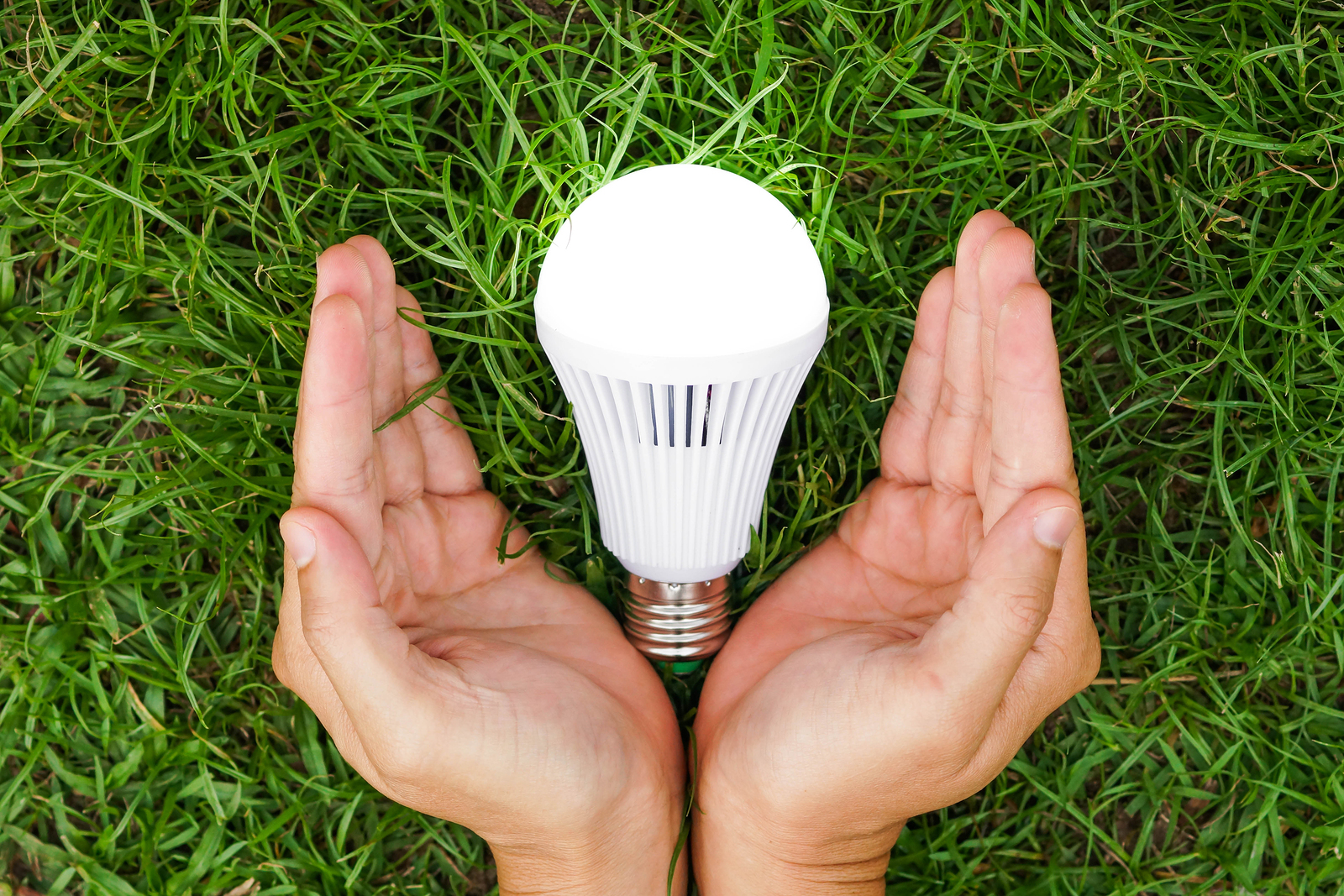Energy-Efficient Lighting
Consumers use approximately 10% of their household electricity to light their homes. They can reduce this amount and costs by replacing incandescent light bulbs with energy-efficient light-emitting diode (LED), halogen, and compact fluorescent light bulbs.
Compare the costs of using LED and halogen lightbulbs with NOVEC’s Lighting Savings Calculator.

LED Lighting
An LED is a semiconductor device which converts electricity into light. The technology resembles a light sandwich: two very thin layers of glass with a chemical in between. When charged with electricity, an electronic signal lights up electrodes, which in turn react to the chemical and emit an almost perfect ultraviolet light.
LEDs produce 50 to 100 times more light for 50,000 to 100,000 more hours than incandescent lights. The longevity of LEDs makes them perfect for traffic lights, exit signs, flashlights, and car dashboards. Homeowners today can install them almost everywhere, including under kitchen cabinets, above staircases, and in two-story rooms. Outdoors, floodlights increase home security. Landscape LEDs make traveling along driveways and walkways safer. They also create beauty by highlighting home and garden landscaping.
Although LEDs cost more than other bulb types initially, their extraordinarily long life and their low power requirements makes them the most cost-efficient bulbs.
LED holiday lights use 0.04 watts per bulb compared to 5 watts for each incandescent two-inch bulb. Over a 30-day period, 500 LED lights on a Christmas tree or holiday display cost about $0.19 in electricity. Consumers will probably never have to replace these bulbs, because they typically last more than 60,000 hours. Unlike incandescent holiday lights, LEDs reduce fire hazards because they do not create heat.
Halogen Lighting
Halogen lights have been used for automobile headlamps, task lighting, recesses, sconces, and torchère lamps, although LEDs are replacing them. Like incandescent bulbs, halogen bulbs contain tungsten filaments. Unlike incandescent bulbs, which contain argon or nitrogen gas enclosed in silica-based glass, halogen bulbs contain halogen gas enclosed in quartz glass. The glass and gas allow the bulbs to produce more light per energy unit, which makes them about 25% more energy-efficient than incandescent bulbs and they can last up to three times longer. Despite their initial higher price, halogens cost less to use than incandescent bulbs in the long run. Halogen color temperature reaches 3,400 degrees Kelvin, which produces a bluish-white light, closest to daylight. In contrast, a 60-watt incandescent bulb produces 2,700°K light.
Safety Precautions: Do not look directly at lighted halogen bulbs or touch them with bare hands. The bulbs are dangerously intense and hot. For this reason, only use a torchère lamp that has an automatic tip-over switch and a mesh guard to prevent contact with the bulb.
Household Hazardous Waste Disposal for Used Fluorescent Bulbs
Safety precaution: When replacing lightbulbs in your home, do not burn or incinerate old fluorescent bulbs to dispose of them. Burning will release the mercury contained in Compact Fluorescent Lightbulbs (CFLs). Check with your county for information about how and where to safely dispose of hazardous waste materials

